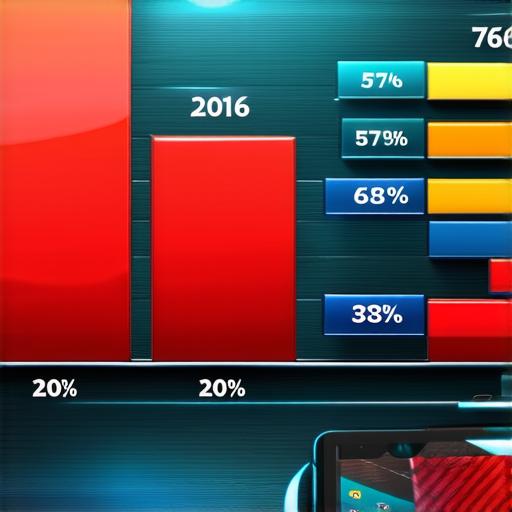When it comes to video games, there are many great series that have captured the hearts and minds of gamers around the world.
From the iconic Mario Bros. to the epic Final Fantasy saga, there are plenty of contenders for the title of “most popular video game series”. In this article, we’ll take a closer look at some of the most beloved video game series and explore what makes them so special.
1. Mario Bros.
One of the most iconic and recognizable video game characters of all time is Mario Bros., who first appeared in the 1980 NES game Super Mario Bros. Since then, Mario has starred in countless games across a variety of platforms, including the Wii, 3DS, and Switch. The appeal of Mario’s games lies in their simplicity and charm. They are easy to pick up and play for people of all ages, making them accessible to a wide audience.
2. Tetris
Another game that has stood the test of time is Tetris. First released in 1984 on the Soviet Union’s Elektronika computer, Tetris quickly gained popularity and was later released on multiple platforms, including the NES and Game Boy. The game’s addictive gameplay, simple mechanics, and universal appeal have made it one of the most successful video games of all time.

3. Final Fantasy
Final Fantasy is a role-playing game series that first debuted in 1987 on the NES. Since then, there have been numerous sequels and spin-offs released on multiple platforms, including the PlayStation, Xbox, and PC. What sets Final Fantasy apart from other RPGs is its rich storytelling and detailed world-building. Players are immersed in a vast universe filled with memorable characters and epic quests.
4. Minecraft
Minecraft is a sandbox game that allows players to create their own worlds and adventures. First released in 2009 by Swedish developer Markus Persson, Minecraft quickly gained popularity and has since been updated and expanded upon numerous times. The game’s open-ended nature and endless possibilities have made it one of the most popular games of all time.
5. Call of Duty
Call of Duty is a first-person shooter game series that was first released in 2003 by Activision. Since then, there have been numerous sequels and expansions released on multiple platforms, including the Xbox, PlayStation, and PC. The appeal of Call of Duty lies in its realistic graphics, intense multiplayer modes, and thrilling storylines.
6. Fortnite
Fortnite is a battle royale game that was first released in 2017 by Epic Games. Since then, it has become one of the most popular games of all time, with millions of players from around the world competing in its matches. The game’s fast-paced action, vibrant graphics, and social aspect have made it a favorite among gamers of all ages.
7. Grand Theft Auto
Grand Theft Auto is an open-world game series that was first released in 2001 by Rockstar Games. Since then, there have been numerous sequels and expansions released on multiple platforms, including the PlayStation, Xbox, and PC. The game’s immersive world, diverse missions, and endless possibilities have made it one of the most popular and successful game franchises of all time.
8. Pokemon
Pokemon is a role-playing game series that was first released in 1996 by Nintendo. Since then, there have been numerous sequels and spin-offs released on multiple platforms, including the Game Boy, DS, and Switch. The game’s collectible nature, charming characters, and engaging gameplay have made it one of the most successful and beloved video game series of all time.
9. Red Dead Redemption 2
Red Dead Redemption 2 is an open-world action game that was released in 2018 by Rockstar Games. Since then, it has become one of the most popular and critically acclaimed games of all time, with many praising its immersive world, engaging storyline, and thrilling


















